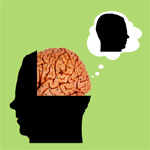This is episode 2 of a story about life insurance and the law. If you haven’t read episode 1, start here.
 Javeed’s first day in court lasts all of ten minutes. The crown prosecutor—Vinod Dasgupta, JD—requests a three-week delay, to March 14. Justice Mackenzie grants the request. Javeed is disgusted that Darren doesn’t object. “Javeed, bud, there’s a simple thing called playing by the rules.”
Javeed’s first day in court lasts all of ten minutes. The crown prosecutor—Vinod Dasgupta, JD—requests a three-week delay, to March 14. Justice Mackenzie grants the request. Javeed is disgusted that Darren doesn’t object. “Javeed, bud, there’s a simple thing called playing by the rules.”
Rex vs. Amiri. On the morning of March 14, Javeed finds himself at Darren’s elbow listening to the theory of his life according to Mr. Dasgupta. The Crown will show that although Javeed purchased life insurance for himself as soon as he was married, he did not suggest a policy for his wife. That the marriage began to deteriorate in the fall of 2086, when the couple came under financial pressure as interest rates rose sharply after they bought their condo. That an expected year-end bonus from Javeed’s employer failed to materialize, and so did a hoped-for promotion. That Javeed was chronically over-optimistic about his prospects, and clueless about the financial health of his employer. That, unlike Javeed, Laila made an astute career move, landing a better-paid and more responsible job in the emergency ward where she worked. That Javeed urged her not to take the promotion; in fact, implored her to cut her working hours, even leave the workforce entirely, despite the couple’s obvious inability to meet their obligations on his salary alone. That Naser, the couple’s friend, who worked as a paramedic at the same hospital, helped Laila make her move, and tried his best to help Javeed see that it was in their interests. Tried in vain.
The Crown will also show that Javeed neglected to go in for a refresher scan on his policy’s anniversary date, although he continued to pay the premium, thereby ensuring his old backup would remain on file. That there was no plausible motive for this failure to update, other than Javeed’s belief, confirmed in his journal, that it would allow him to evade responsibility for his actions. Continue reading “Jihad of the Heart – episode 2”









